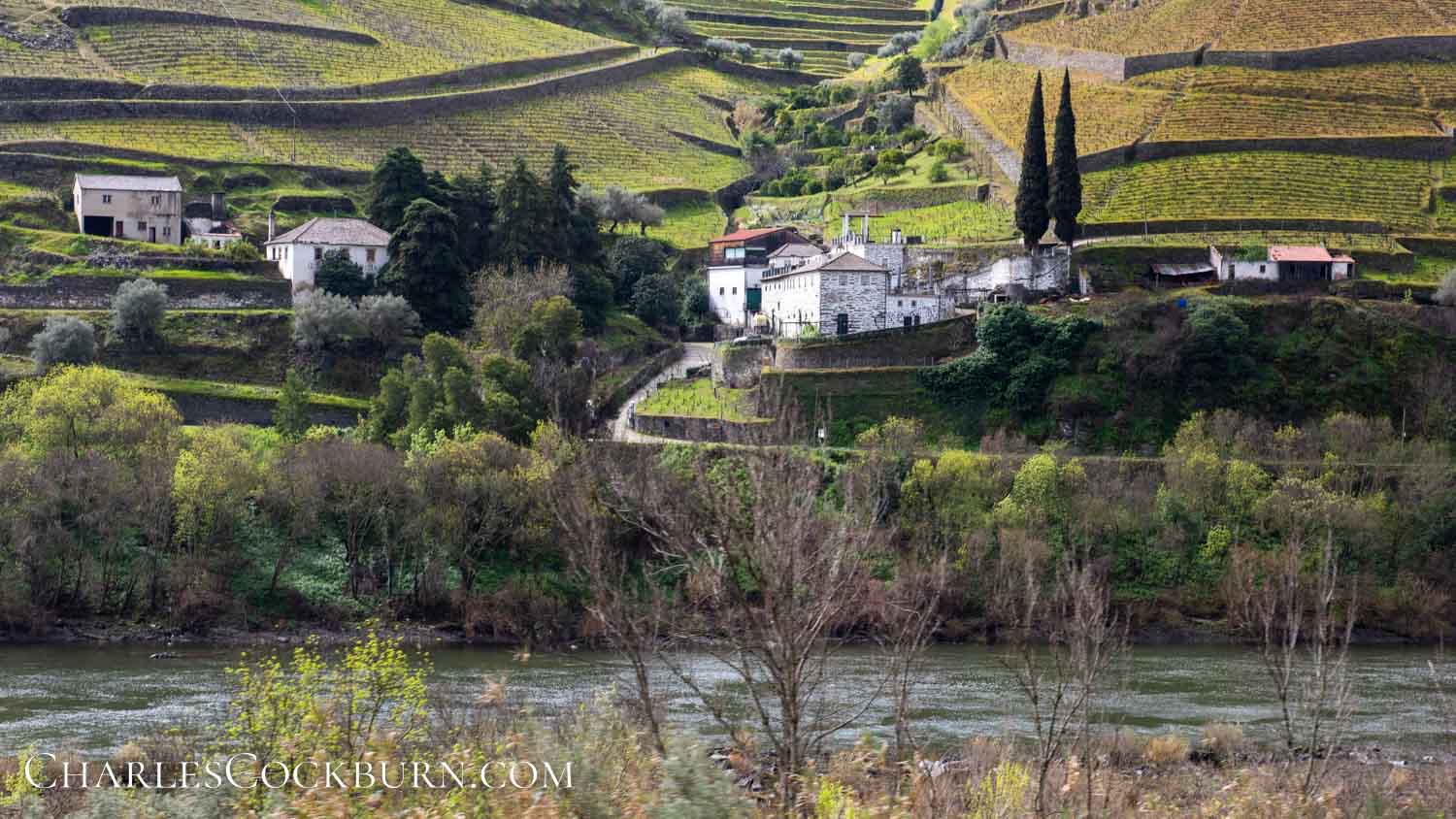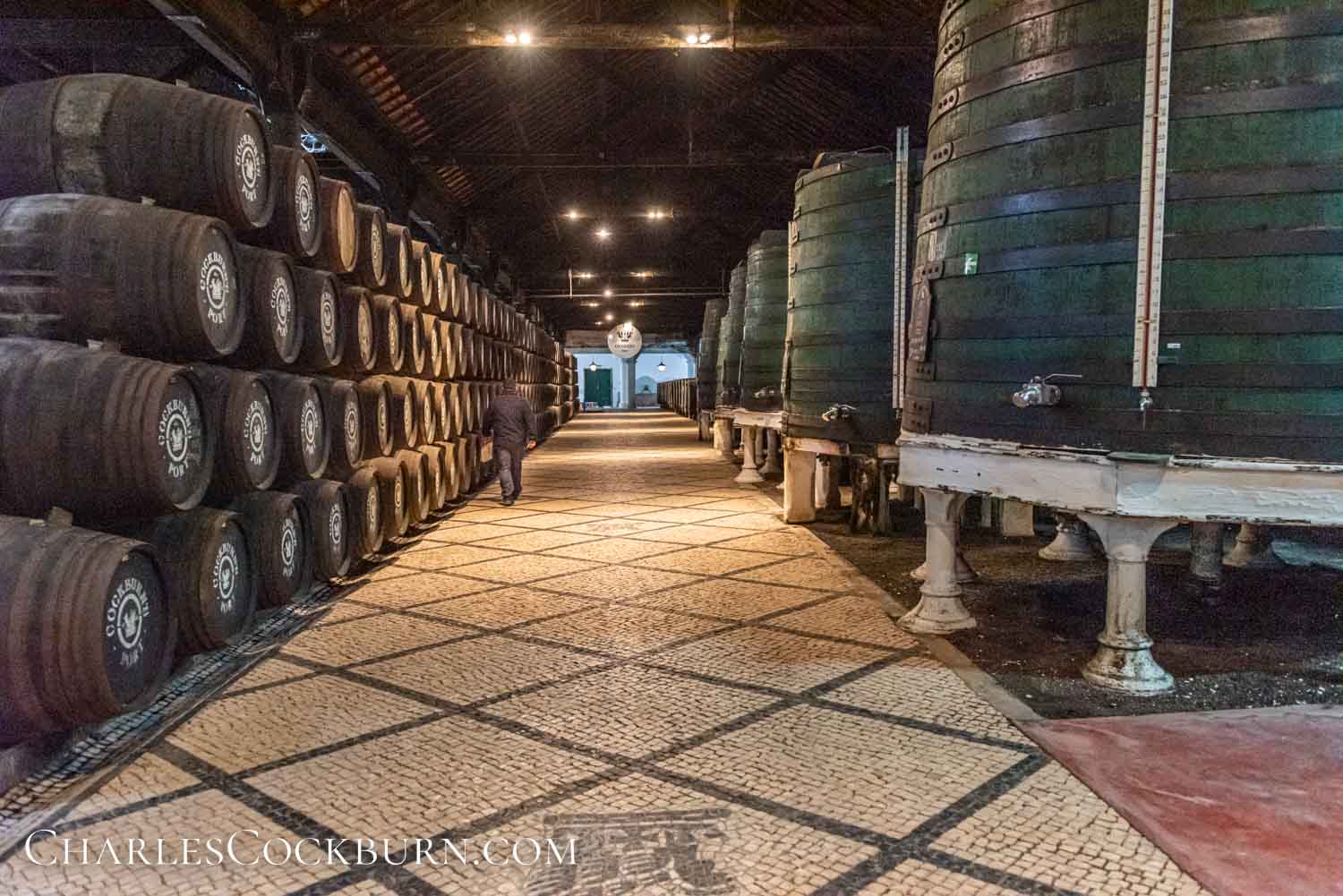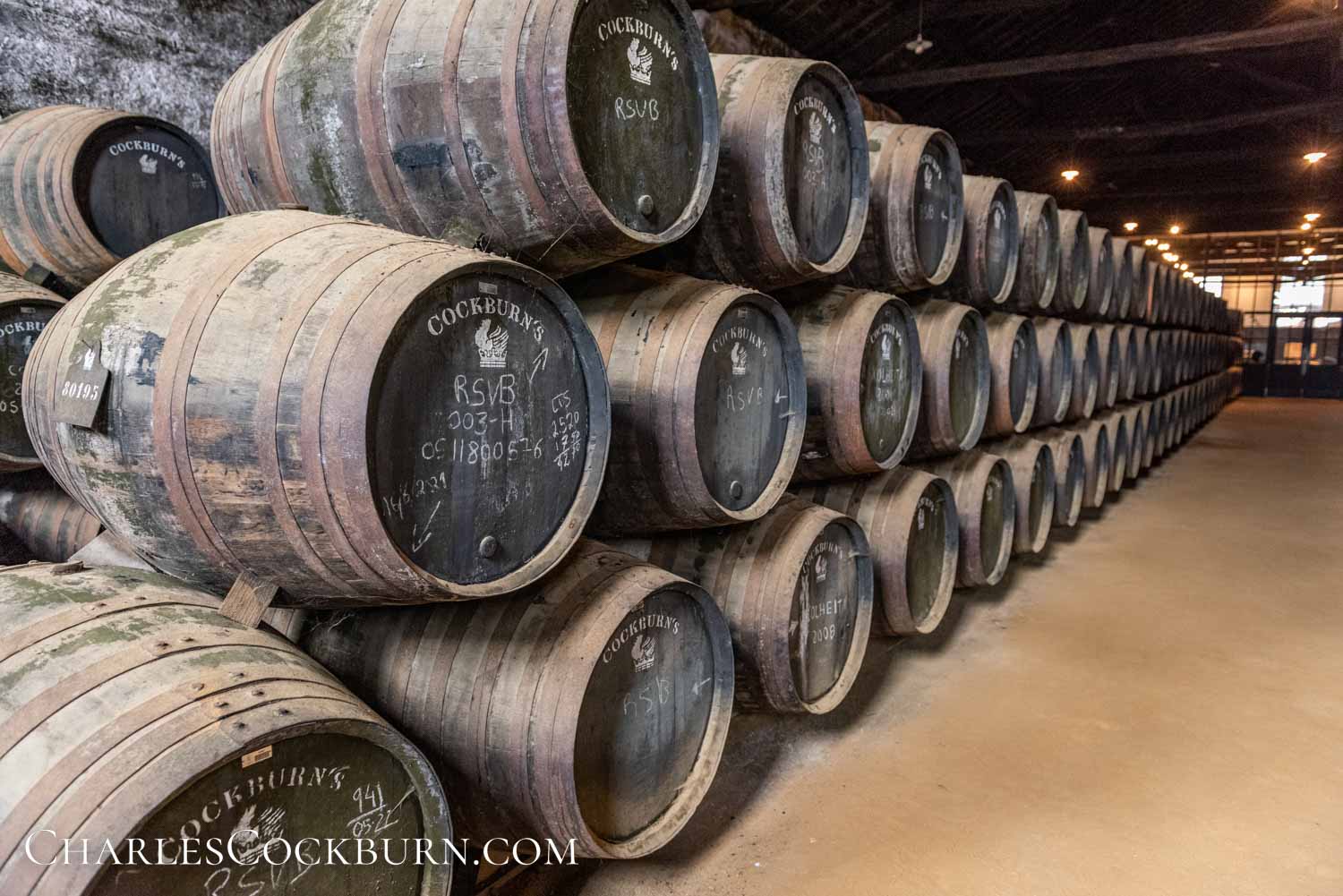This post may contain affiliate links. That means if you click on a link and make a purchase, I may make a small commission at no additional cost to you. Thank you for your support!
Earlier this year my hubby and I had the joy of visiting Portugal for 3 weeks. When visiting Portugal, it is pretty much a requirement to taste the famous port wine – and not just once, mind you! You ought to enjoy it on its own, enjoy it after dinner, enjoy it mixed into a cocktail, and probably just plan on enjoying a small glass every day or so. We opted to take our port exploration even further by touring Cockburn’s Port Lodge near Porto, Portugal (Cockburn IS our last name, after all! How could we not take a tour!), followed by a short journey up the Douro Valley where all the grapes used for making port are grown. While I am certainly NOT an expert on port wine, I did learn answers to some of the most common port questions, and thought I would share them with you here! So let’s start with the biggie – exactly what is port wine?
Simply put, port wine – usually just called port – is a fortified wine made with grapes from the Douro Valley in Northern Portugal. Let’s break that down a little further and chat about how to enjoy this delicious beverage…
How is port fortified?
So if port is a type of fortified wine, what does it mean to be fortified? Fortification is the process of adding a distilled alcohol, often called a spirit, to wine during or after fermentation. In the case of port, the alcohol is a neutral grape spirit, similar to clear brandy. It is added during the fermentation process, killing the yeast and stopping the fermentation before all of the sugar in the soon-to-be port is converted to alcohol. This results in a product that is typically sweet with an alcohol percentage of about 20%.
Other well-known examples of fortified wines are sherry from Spain, madeira from the Portuguese islands of Madeira, marsala from Sicily, and vermouth which is produced in many places.
What’s so special about the Douro Valley?
For one, it is a gorgeous river valley flanked by very steep, terraced hills sprinkled with ancient ruins. From the perspective of growing grapes, it is all about the terroir, or the taste of the place. The extreme climate (cold in the winter and hot in the summer), steep hills, and poor slate-like schist soil force the vines to work hard, resulting in low yields of rich and complex fruit.

How is port wine different from regular wine?
Port begins life in much the same way as regular wine, which is also called table wine. It is even made with many of the same grapes. The primary difference is that port is fortified during the fermentation process. Fortification means that distilled alcohol, similar to clear brandy, is added to the port to stop the fermentation, creating a sweeter and higher alcohol product. Table wines typically range from about 5% to 14% alcohol by volume, while port is about 20% alcohol by volume.
What are the different kinds of port wine?
Port can be categorized into ruby, tawny, white, and rosé port. The most well-known are ruby and tawny, while rosé is a newcomer to the port scene.
Ruby port is aged in extremely large wood vats. Because the vats are so large, the port has very little contact with the wood, resulting in a product that has a beautiful ruby-red color with lovely fruit flavors reminiscent of cherry and blackberry.
Tawny port is aged in smaller wood casks, giving the port much more contact with the wood. This smaller size also allows for more oxidation. The result is a port with a muted red or warm copper color and flavors of nuts and butterscotch.
White port is made with white wine grape varieties and is only allowed to be in contact with the grape skins for a very short period of time which results in the port’s white color. After aging, the color ranges from very pale straw to light gold, with flavors of citrus, nuts, and honey. White port has become especially popular as a mixer in cocktails like the port and tonic, which is trendy throughout Portugal.
Rosé port is the newest addition to the port lineup. Unlike white port, rosé is allowed to be in contact with the grape skins for a few hours – just long enough to give the juice a hint of pink color. With that lovely blush color and flavors that hint of strawberry, cranberry, and caramel, it makes a perfect brunch-time sipper!

Can any sweet wine or fortified wine be called port?
No, there are several very specific requirements that must be met before a wine can be called port. Most notably, it must be produced in the Douro Valley of Northern Portugal. So while your favorite winery down the road may produce something that they are calling port, it is technically a port-style wine and not really port.
Here is an interesting tidbit – the Douro Valley is generally considered the oldest demarcated appellation (an official wine-growing region) in the world, established in 1756. Depending on who you talk to and how the specifics are defined, it is possible that Chianti in Italy and Takaj in Hungary may be older demarcated regions, but we will leave that argument to the historians.
Now for the fun question – how do you drink port?
Well, the quippy answer is, drink it however you like! There are no rules! But if you want to be a bit more proper, here are a few standards for you…
Should I drink port before or after dinner?
Ruby and tawny ports are typically sweet, so most folks choose to enjoy a small glass after dinner. These ports go wonderfully with desserts, especially chocolate, and are also a lovely accompaniment to a cheese and nut plate.
White and rosé ports are often consumed before dinner as an aperitif, or mixed with cocktails. They are a perfect addition to brunch or a lazy afternoon on the patio.
What temperature should port be served?
Generally speaking, ruby and tawny ports are best just below room temperature – in the low 60°s F. White and rosé ports prefer more of a chill, around 50°F. OR, to keep it simple, serve ruby and tawny ports at a cool room temperature and serve white and rosé ports chilled or on ice. Easy!
What are some port wine cocktails?
I’ve rounded up a few tasty-sounding recipes from a handful of port producers for you to try! Click on a link to open the recipe…
- This Porto Negroni from Taylor Fladgate is an intriguing twist on the classic!
- Or how about a simple combination of ruby port and sparkling wine with the Sandeman Sparkler from Sandeman?
- This casual combo of tawny port, ginger beer, and bitters from Cockburn’s would be perfect for a Saturday afternoon cocktail!
So there you have it! Hopefully, we have uncovered the answer to what is port wine, plus have successfully explored a few ideas for how to get started enjoying this tasty beverage.
Saúde! (Cheers in Portuguese)










Leave a Reply